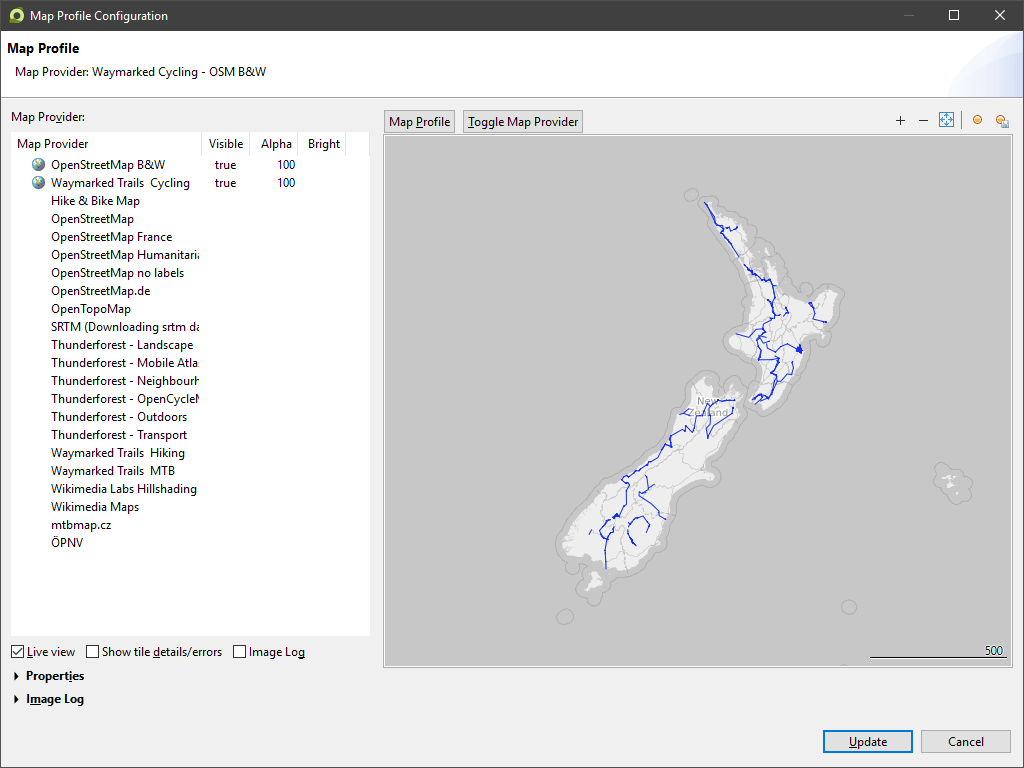

At the end of the article we will pull the code together to identify a more efficient way to deal with geocoding Web of Science and similar data.īy the end of this Chapter you will be familiar with what geocoding is and how to carry out geocoding using the placement, ggmap and googleway packages in R with RStudio. In this Chapter we will go step by step through the process of geocoding and deal with the issues we encounter along the way. However, as we will see below the Google Maps API now seems to do a very good job of handling these issues but considerable care is needed when interpreting the results. Until recently this made geocoding a significant headache. One of the issues with Web of Science data is that the names of organisations are abbreviated/stemmed (so that University becomes Univ, Institute becomes Inst and so on and so on). It simply contains the author affiliation name and a count of the number of records.
#Api key quickmap osm download#
To follow the walk through you can download the data from Github here. The data also contains variations in geographic locations such as references to a district within a city rather than the name of the city itself.

This data is not clean and contains multiple minor variations of the same organisation name. We have a table with 5,206 author affiliation details containing the names of organisations, the city and the country. Our dataset is from a set of queries for scientific literature for South East Asia (ASEAN) countries that involve marine organisms. What we are attempting to do is to obtain the addresses and coordinates from the author affiliations field in Web of Science records. We will be working with data that is really rather messy. However, many of them start with data that is already clean. There are plenty of example walkthroughs on how to do this.

This is normally done using a web service. Geocoding is the process of taking a name and address and looking up the geographic coordinates expressed in latitude and longitude. Many universities have access to Web of Science and it is an important tool in fields such as bibliometrics/scientometrics. We will work with some raw data from Clarivate Analytics Web of Science database of scientific literature. We will focus on illustrating the issues involved in geocoding using the placement, ggmap, and googleway packages in R. The Google Maps API can be accessed in a range of programming languages such as Python or R. This chapter addresses a more advanced form of geocoding using web services, and specifically the Google Maps API to geocode thousands of organisation names from Web of Science data.
#Api key quickmap osm free#
Basic geocoding such as clustering records by country can be performed using country codes or country names in free tools such as Tableau Public. Geocoding is a relatively recent and popular way to map activity in geographic space, such as research organisations, patent applicants and patent inventors. In this Chapter we will explore geocoding, Geocoding is the process of turning location names such as organisation names or addresses into georeferences in the form of latitude and longitude coordinates for representation on a map 6. 8.9 From Vector Based Models to Transformers.8.8.2 Step 2: Multilabel Text Classification.8.8.1 Step 1: Binary Text Classification.8.8 Machine Learning for Text Classification.7.6 Combining Text Mining with Patent Classification.6.7 Counting Citations by Patent Families.6.4 The US PatentsView Non-Patent Literature Table.6.3 Retrieving Citations at Scale with PATCITE.6.2 Literature and Patent Citation Data with the Lens.5.6 Classification and Patent Overlay Mapping.5.5.1 Case Study: Finding A Needle in A Haystack.5.4 Visualising Relationships with Chord Diagrams.

5.3 Assessing Relationships Between Technology Areas.5.1 Exploring the International Patent Classification.4.6 Trends by Country using Publication Data.4.5.1 Mapping Publications (Family Members).3.14 Preprocess the Data and Rerun the Query.3.13 Assessing the Quality of Geocoding.3.2 Getting set up with the Google Maps API.2.7 Linking Citations with Patent Literature.2.6 Linking the Scientific Literature with Patent Analysis.2.5 Visualizing the Scientific Literature.2.1 Accessing the Scientific Literature.


 0 kommentar(er)
0 kommentar(er)
